Lida Group Revolutionizes Affordable Living with Low-Cost Sandwich Panel Houses Designed as Easy-Assemble Prefab Mobile Homes
2025-Oct-09 17:05:39
By Admin
1. Introduction: The Global Crisis of Affordable Housing
In recent decades, the global housing crisis has emerged as one of the most pressing social and economic challenges of our time. Rapid urbanization, population growth, and rising construction costs have left millions of people around the world struggling to find safe, decent, and affordable places to live. From overcrowded slums in developing countries to skyrocketing rent prices in major cities of developed nations, the gap between housing supply and demand continues to widen. According to the United Nations, an estimated 1.6 billion people worldwide lack adequate housing, and this number is projected to increase to 2.5 billion by 2030.
Against this backdrop, the search for innovative, cost-effective housing solutions has become more urgent than ever. Traditional construction methods, which are often time-consuming, labor-intensive, and expensive, have proven unable to keep up with the growing demand for affordable homes. This is where prefabricated (prefab) housing has emerged as a game-changer. Prefab homes are built in factories, with components manufactured off-site and then transported to the construction site for assembly. This approach offers numerous advantages over traditional construction, including reduced construction time, lower labor costs, and greater quality control.
Among the companies leading the charge in revolutionizing prefab housing is Lida Group, a renowned manufacturer of building materials and prefabricated structures. With a focus on affordability, sustainability, and ease of assembly, Lida Group has developed a line of low-cost sandwich panel houses that are designed as easy-assemble prefab mobile homes. These homes not only address the global housing crisis but also offer a flexible and practical housing solution for a wide range of applications.
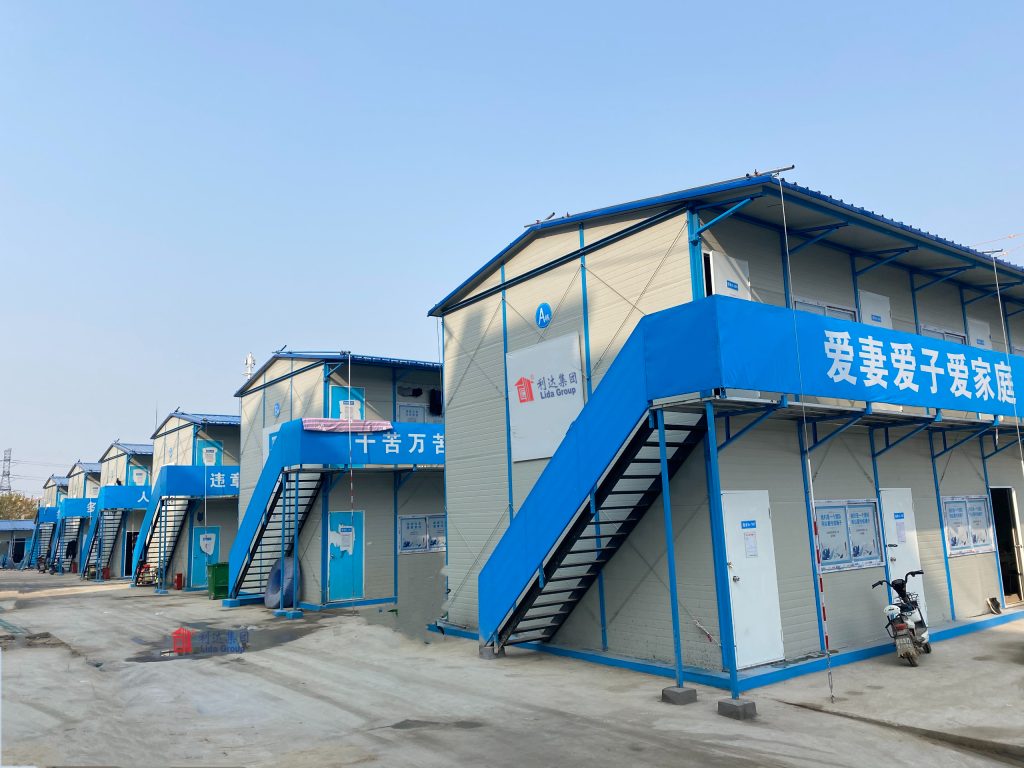
2. Understanding Lida Group: A Leader in Innovative Construction Solutions
Founded with a vision to transform the construction industry through innovation and sustainability, Lida Group has established itself as a trusted name in the global market for building materials and prefabricated structures. With years of experience in research, development, and manufacturing, the company has built a reputation for delivering high-quality, cost-effective products that meet the diverse needs of its customers.
Lida Group’s commitment to innovation is evident in its investment in research and development. The company has a team of highly skilled engineers and designers who are constantly exploring new materials, technologies, and construction methods to improve the performance and affordability of its products. This focus on innovation has led to the development of a range of cutting-edge products, including its signature sandwich panel houses.
In addition to innovation, Lida Group places a strong emphasis on sustainability. The company recognizes the importance of reducing the environmental impact of construction, and its products are designed with this in mind. From the use of eco-friendly materials to the optimization of energy efficiency, Lida Group’s sandwich panel houses are built to minimize their carbon footprint and contribute to a more sustainable future.
Furthermore, Lida Group is dedicated to providing excellent customer service. The company works closely with its customers to understand their specific needs and requirements, and it offers customized solutions to meet those needs. Whether it’s a small residential project or a large-scale commercial development, Lida Group provides comprehensive support throughout the entire construction process, from design and manufacturing to installation and after-sales service.
3. The Core Innovation: Low-Cost Sandwich Panel Houses
At the heart of Lida Group’s revolution in affordable living is its low-cost sandwich panel houses. These houses are constructed using sandwich panels, which are composite materials consisting of two outer layers (facings) and a core material. The facings are typically made of high-quality steel, aluminum, or other durable materials, while the core material can be polyurethane foam, rock wool, glass wool, or other insulating materials.
3.1 Composition and Properties of Sandwich Panels
The unique composition of sandwich panels gives them a range of excellent properties that make them ideal for use in prefab housing. One of the key advantages of sandwich panels is their high strength-to-weight ratio. The outer facings provide structural strength, while the core material adds rigidity and insulation without adding excessive weight. This makes sandwich panels lightweight yet strong, which simplifies transportation and installation.
Another important property of sandwich panels is their excellent thermal insulation. The core material, such as polyurethane foam or rock wool, has high thermal resistance, which helps to keep the interior of the house warm in winter and cool in summer. This not only improves the comfort of the occupants but also reduces energy consumption for heating and cooling, leading to lower utility bills.
In addition to thermal insulation, sandwich panels also offer good sound insulation. The core material absorbs sound waves, reducing the transmission of noise from the outside to the inside of the house. This is particularly important for homes located in noisy areas, such as near highways or airports.
Furthermore, sandwich panels are highly durable and resistant to various environmental factors. The outer facings are treated to resist corrosion, rust, and weathering, ensuring that the panels can withstand the test of time. The core material is also resistant to moisture, mold, and mildew, which helps to maintain the integrity of the house and improve indoor air quality.
3.2 Cost-Effectiveness of Sandwich Panel Houses
One of the main reasons why Lida Group’s sandwich panel houses are so revolutionary is their cost-effectiveness. The use of sandwich panels significantly reduces the cost of construction compared to traditional building materials. There are several factors that contribute to the low cost of these houses.
First, the manufacturing process of sandwich panels is highly efficient. The panels are produced in factories using automated equipment, which reduces labor costs and increases production speed. This allows Lida Group to mass-produce the panels at a lower cost per unit.
Second, the lightweight nature of sandwich panels reduces transportation costs. Since the panels are lighter than traditional building materials, such as bricks and concrete, they require less fuel to transport, and more panels can be transported in a single shipment. This not only lowers transportation costs but also reduces the environmental impact of transportation.
Third, the ease of assembly of sandwich panel houses reduces labor costs at the construction site. The panels are designed to fit together easily, and the assembly process can be completed with a small team of workers in a short period of time. This eliminates the need for large numbers of skilled laborers, which is often a major cost driver in traditional construction.
Finally, the low maintenance requirements of sandwich panel houses contribute to their long-term cost-effectiveness. The durable materials used in the panels require minimal maintenance over time, reducing the need for costly repairs and replacements.
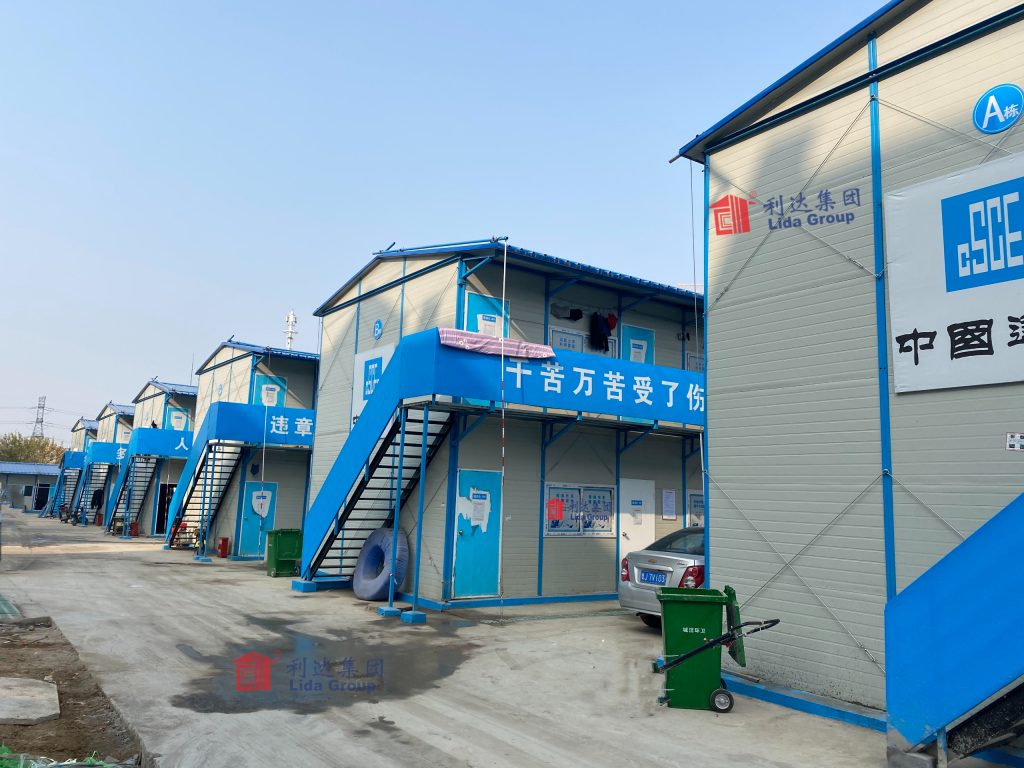
4. Easy-Assemble Design: Making Housing Accessible to All
In addition to being low-cost, Lida Group’s sandwich panel houses are designed to be easy to assemble. This feature is crucial in making housing accessible to a wide range of people, including those with limited construction experience or resources.
4.1 Design Features for Easy Assembly
The easy-assemble design of Lida Group’s sandwich panel houses is achieved through a number of innovative design features. One of the key features is the use of a modular construction system. The houses are divided into a number of prefabricated modules, each of which is manufactured in the factory and then transported to the construction site. These modules are designed to fit together seamlessly, using simple connection mechanisms such as bolts, screws, or clips.
Another important design feature is the standardization of components. All the components used in the houses, such as the sandwich panels, doors, windows, and plumbing fixtures, are standardized to ensure compatibility and ease of assembly. This means that customers can easily source replacement parts if needed, and the assembly process is simplified as workers do not have to deal with custom-made components.
Furthermore, Lida Group provides detailed assembly instructions and technical support to its customers. The assembly instructions are clear and easy to follow, with step-by-step diagrams and explanations. In addition, the company offers on-site training and support to ensure that the assembly process goes smoothly. This is particularly helpful for customers who are assembling the houses themselves or who have a small team of workers with limited experience.
4.2 Assembly Time and Labor Requirements
The easy-assemble design of Lida Group’s sandwich panel houses significantly reduces the assembly time and labor requirements compared to traditional construction. A typical sandwich panel house can be assembled in a matter of days or weeks, depending on the size and complexity of the house, whereas traditional construction can take months or even years.
For example, a small one-bedroom sandwich panel house can be assembled by a team of 2-3 workers in as little as 3-5 days. A larger three-bedroom house may take 1-2 weeks to assemble with a team of 4-5 workers. This rapid assembly time not only reduces the overall construction cost but also allows customers to move into their new homes quickly.
The reduced labor requirements also make the houses more accessible to people in areas where skilled labor is scarce or expensive. Since the assembly process is simple and does not require specialized skills, even unskilled workers can be trained to assemble the houses with minimal effort. This helps to create local employment opportunities and reduces the reliance on imported labor.
5. Prefab Mobile Homes: Flexibility and Mobility for Modern Lifestyles
Lida Group’s sandwich panel houses are not only easy to assemble but also designed as prefab mobile homes. This means that the houses can be easily transported and relocated, offering a high degree of flexibility and mobility for modern lifestyles.
5.1 Mobility Features of Prefab Mobile Homes
The mobility of Lida Group’s prefab mobile homes is achieved through a number of design features. One of the key features is the use of a lightweight and durable frame. The frame is designed to support the weight of the house and can be easily attached to a trailer or other transportation device for movement.
Another important feature is the modular design of the houses. Since the houses are divided into prefabricated modules, each module can be transported separately and then reassembled at the new location. This makes it easy to move the house even if the new location has limited access or space.
Furthermore, the houses are designed to be self-contained, with all the necessary utilities and amenities built-in. This includes plumbing, electrical, and heating/cooling systems, as well as kitchen and bathroom fixtures. This means that the house can be connected to local utilities at the new location quickly and easily, without the need for extensive on-site work.
5.2 Applications of Prefab Mobile Homes
The flexibility and mobility of Lida Group’s prefab mobile homes make them suitable for a wide range of applications. One of the main applications is in temporary housing. For example, the houses can be used as temporary accommodation for workers on construction sites, disaster relief victims, or students in remote areas. Since the houses can be easily transported and assembled, they can be deployed quickly to meet urgent housing needs.
Another application is in recreational housing. The houses are ideal for use as vacation homes, camping cabins, or mobile offices. Their mobility allows owners to move them to different locations depending on their needs and preferences, whether it’s a scenic mountain area, a coastal resort, or a busy city center.
In addition, the prefab mobile homes can be used in permanent housing solutions. For people who prefer a flexible lifestyle, such as digital nomads or those who frequently move for work, the mobile homes offer a convenient and cost-effective housing option. They can also be used in rural areas where traditional construction may be difficult or expensive, providing access to safe and decent housing for rural communities.
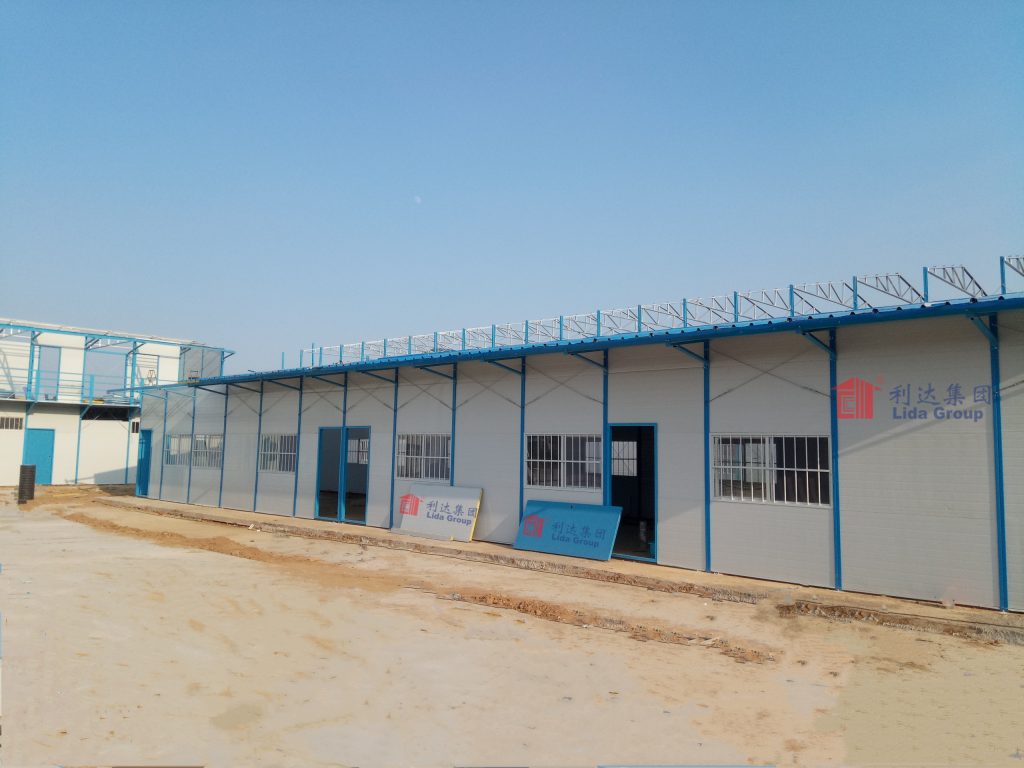
6. Quality and Safety: Ensuring Peace of Mind for Homeowners
While Lida Group’s sandwich panel houses are low-cost and easy to assemble, the company does not compromise on quality and safety. The houses are designed and manufactured to meet the highest international standards, ensuring that they are safe, durable, and comfortable for homeowners.
6.1 Quality Control Measures
Lida Group has implemented a strict quality control system throughout the entire manufacturing process. From the selection of raw materials to the final inspection of finished products, every step is closely monitored to ensure that the products meet the company’s high-quality standards.
The company sources raw materials from trusted suppliers who meet strict quality requirements. All raw materials are tested for quality before they are used in the manufacturing process. For example, the steel used in the outer facings of the sandwich panels is tested for strength, corrosion resistance, and other properties to ensure that it can withstand the rigors of construction and use.
During the manufacturing process, the sandwich panels are produced using advanced equipment and techniques. The production process is automated to ensure consistency and precision, and each panel is inspected for defects such as cracks, warping, or uneven surfaces. Any panels that do not meet the quality standards are rejected and sent back for rework or disposal.
In addition, the prefabricated modules are assembled and tested in the factory before they are shipped to the construction site. This allows the company to identify and resolve any issues before the modules are delivered, ensuring that the assembly process at the site goes smoothly.
6.2 Safety Features of Sandwich Panel Houses
Lida Group’s sandwich panel houses are designed with a range of safety features to protect homeowners from fire, natural disasters, and other hazards.
Fire safety is a top priority for the company. The sandwich panels used in the houses are made of fire-resistant materials. For example, the core material can be rock wool or glass wool, which are non-combustible and have high fire resistance ratings. The outer facings are also treated to be fire-resistant, reducing the risk of fire spreading through the house. In addition, the houses are equipped with fire alarms, smoke detectors, and fire extinguishers to provide early warning and protection in case of a fire.
The houses are also designed to withstand natural disasters such as earthquakes, hurricanes, and floods. The lightweight yet strong structure of the sandwich panels makes the houses more resistant to earthquakes, as they can absorb and dissipate the energy of the earthquake without collapsing. The houses are also designed to be wind-resistant, with features such as reinforced frames and wind-resistant windows and doors to withstand strong winds from hurricanes or tornadoes. In flood-prone areas, the houses can be elevated on stilts to prevent water damage.
Furthermore, the houses are designed to provide a safe and healthy living environment. The materials used in the houses are non-toxic and do not emit harmful chemicals, ensuring good indoor air quality. The houses are also well-ventilated, with windows and vents that allow fresh air to circulate, reducing the risk of mold and mildew growth.
7. Case Studies: Real-World Applications of Lida Group’s Sandwich Panel Houses
To demonstrate the effectiveness and versatility of its sandwich panel houses, Lida Group has completed a number of successful projects around the world. These case studies highlight the various applications of the houses and the benefits they have brought to homeowners and communities.
7.1 Case Study 1: Disaster Relief Housing in Nepal
In 2015, Nepal was hit by a devastating earthquake that killed thousands of people and destroyed millions of homes. In the aftermath of the earthquake, there was an urgent need for temporary housing to shelter the homeless. Lida Group responded to this crisis by providing a large number of its sandwich panel houses as disaster relief housing.
The sandwich panel houses were chosen for this project because of their quick assembly time, low cost, and durability. The houses were manufactured in Lida Group’s factory in China and then transported to Nepal. A team of Lida Group’s engineers and technicians traveled to Nepal to oversee the assembly process, and local workers were trained to assist with the assembly.
Within a few weeks, hundreds of sandwich panel houses were assembled and handed over to the earthquake victims. The houses provided a safe and comfortable shelter for the victims, protecting them from the elements and providing a sense of security. The thermal insulation properties of the sandwich panels also helped to keep the houses warm during the cold Nepalese winters, improving the comfort of the occupants.
The success of this project demonstrated the ability of Lida Group’s sandwich panel houses to provide rapid and effective housing solutions in times of crisis. It also highlighted the company’s commitment to social responsibility and its willingness to help communities in need.
7.2 Case Study 2: Affordable Housing Development in Kenya
In Kenya, the shortage of affordable housing is a major problem, particularly in urban areas. Many low-income families are forced to live in overcrowded slums with poor living conditions. To address this issue, Lida Group partnered with a local housing developer to build an affordable housing development using its sandwich panel houses.
The housing development consisted of 500 one-bedroom and two-bedroom sandwich panel houses. The houses were designed to be low-cost, with prices that were affordable for low-income families. The easy-assemble design of the houses allowed the development to be completed in a short period of time, with construction taking just six months from start to finish.
The sandwich panel houses were well-received by the homeowners. The houses were spacious, bright, and well-insulated, providing a comfortable living environment. The homeowners also appreciated the low maintenance requirements of the houses, which helped to reduce their monthly expenses.
In addition to providing affordable housing, the development also included community facilities such as a school, a health clinic, and a market. This helped to create a vibrant and sustainable community, improving the quality of life for the residents.
The success of this project in Kenya has inspired other housing developers in the country to consider using Lida Group’s sandwich panel houses for their affordable housing projects. It has also demonstrated the potential of prefab housing to address the global housing crisis in developing countries.
7.3 Case Study 3: Recreational Housing in the United States
In the United States, there is a growing demand for recreational housing such as vacation homes and camping cabins. Lida Group has tapped into this market by providing its prefab mobile sandwich panel houses to recreational housing developers.
One such project was a camping resort in Colorado, which wanted to expand its accommodation options with high-quality, affordable cabins. The resort chose Lida Group’s sandwich panel houses because of their mobility, easy assembly, and durability.
The cabins were manufactured in Lida Group’s factory and then transported to the resort. The assembly process was completed in just a few days, allowing the resort to open the new cabins to guests quickly. The cabins were designed to be comfortable and functional, with features such as a kitchenette, a bathroom, and a living area. The thermal insulation properties of the sandwich panels also made the cabins suitable for use in the cold Colorado winters.
The guests at the resort were impressed with the cabins, praising their comfort, cleanliness, and quietness. The mobility of the cabins also allowed the resort to rearrange the accommodation layout as needed, depending on the season and the number of guests.
This case study demonstrates the versatility of Lida Group’s sandwich panel houses, which can be adapted to meet the needs of different markets and applications. It also shows that prefab mobile
homes are not limited to specific regions or markets but can thrive in diverse contexts, from developing nations to developed economies.
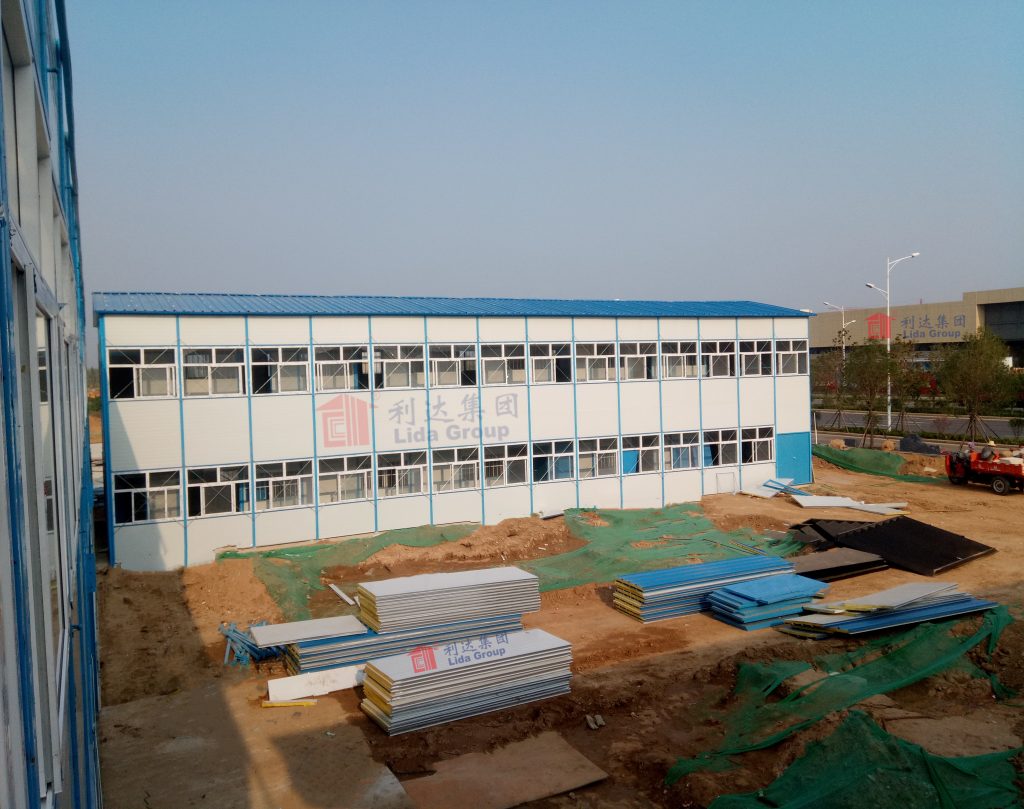
8. Industry Impact: Transforming the Global Prefab Housing Sector
Lida Group’s innovation in low-cost, easy-assemble sandwich panel mobile homes has not only addressed housing needs but also sparked a shift in the global prefab housing industry. Before the widespread adoption of such solutions, the prefab sector often faced criticism for being inflexible, overly expensive, or lacking in quality compared to traditional homes. Lida Group’s approach has shattered these stereotypes, proving that prefab housing can be both affordable and high-performing.
One of the most significant impacts is the increased accessibility of prefab solutions for small-scale developers and individual homeowners. Previously, prefab housing was often associated with large commercial projects, as the cost of customizing designs or scaling down production was prohibitive. Lida Group’s standardized modules and low-cost materials have changed this, allowing even small teams or individuals to invest in prefab homes without compromising on quality. This has opened up new opportunities for housing development in rural areas, where large construction firms often hesitate to operate due to low profit margins.
Additionally, Lida Group’s focus on sustainability has set a new standard for the industry. Many prefab manufacturers have now followed suit, integrating eco-friendly materials and energy-efficient designs into their products. This shift is crucial in the fight against climate change, as the construction industry accounts for approximately 39% of global carbon emissions (according to the World Green Building Council). By demonstrating that sustainable housing can also be affordable, Lida Group has encouraged a broader adoption of green practices across the sector.
The company’s success has also fostered competition and innovation. Other manufacturers are now investing in research to develop even more cost-effective materials and faster assembly methods, leading to a wider range of affordable prefab options for consumers. This competition has ultimately benefited homeowners, who now have access to better-quality, more flexible housing solutions at lower prices.
9. Future Outlook: Expanding the Reach of Affordable, Mobile Housing
As the global housing crisis continues to evolve, Lida Group is poised to expand its impact even further. The company has announced plans to invest in new research and development initiatives aimed at enhancing the performance and versatility of its sandwich panel houses. One key area of focus is the integration of smart home technology. By adding features such as energy-efficient smart thermostats, solar panel compatibility, and remote monitoring systems, Lida Group aims to make its homes even more sustainable and convenient for modern homeowners.
Another future goal is to expand into new markets. While the company has already made inroads in Asia, Africa, and North America, it plans to target regions such as South America and the Middle East, where affordable housing needs are particularly acute. To support this expansion, Lida Group is working to establish local manufacturing facilities in key regions. This will not only reduce transportation costs but also create local jobs, further contributing to the economic development of the communities it serves.
Lida Group is also exploring partnerships with governments and non-governmental organizations (NGOs) to scale up its disaster relief efforts. The company’s quick-assemble homes have already proven invaluable in post-disaster scenarios, and by collaborating with global aid organizations, it hopes to ensure that its housing solutions are deployed more rapidly and efficiently in future crises. These partnerships will also help to raise awareness about the potential of prefab housing as a long-term solution to housing insecurity, rather than just a temporary fix.
In addition, the company is researching new materials to further improve the sustainability of its homes. For example, it is testing the use of recycled materials in the production of sandwich panel cores, which could reduce waste and lower the environmental impact of manufacturing. It is also exploring the use of biodegradable materials for certain components, ensuring that its homes are not only sustainable during use but also at the end of their lifecycle.
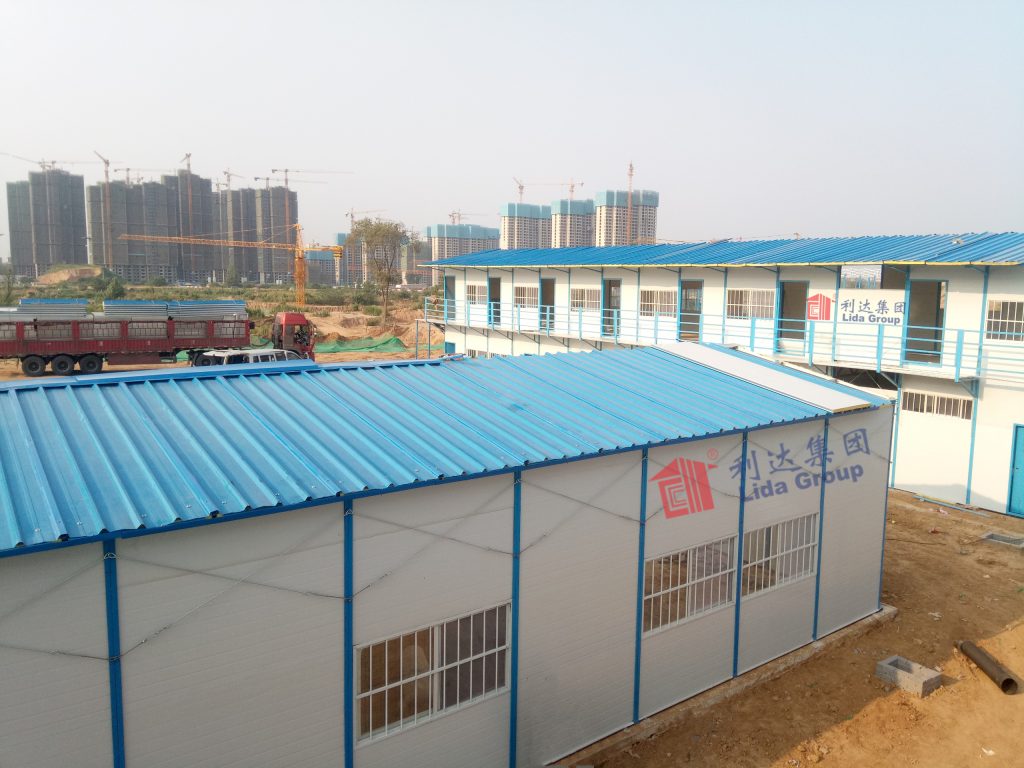
10. Conclusion
Lida Group’s low-cost, easy-assemble sandwich panel prefab mobile homes represent a groundbreaking solution to one of the world’s most pressing challenges: the lack of affordable housing. By combining innovative materials, efficient manufacturing processes, and a focus on flexibility and sustainability, the company has created homes that are accessible to millions of people who would otherwise be unable to afford safe, decent housing.
The key strengths of Lida Group’s solution lie in its cost-effectiveness, ease of assembly, and mobility. The use of sandwich panels reduces construction and transportation costs, while the modular design allows for quick assembly with minimal labor. The mobility of the homes makes them suitable for a wide range of applications, from temporary disaster relief housing to permanent homes for digital nomads and rural communities. Furthermore, the company’s commitment to quality and safety ensures that these homes are not only affordable but also durable and secure, providing homeowners with peace of mind.
Real-world case studies, from disaster relief in Nepal to affordable housing developments in Kenya and recreational cabins in the United States, demonstrate the versatility and effectiveness of Lida Group’s homes. These projects have not only provided shelter but also improved the quality of life for communities, creating sustainable neighborhoods and fostering economic development.
Beyond its direct impact on homeowners, Lida Group has transformed the global prefab housing industry, setting new standards for affordability, sustainability, and innovation. Its success has inspired other manufacturers to adopt similar practices, leading to a wider range of affordable housing options for consumers worldwide.
Looking to the future, Lida Group’s plans to integrate smart technology, expand into new markets, and enhance sustainability will further solidify its position as a leader in the affordable housing sector. By continuing to prioritize innovation and social responsibility, the company is well-equipped to address the evolving needs of the global housing market and make a lasting difference in the lives of millions.
In a world where the gap between housing supply and demand continues to widen, Lida Group’s sandwich panel houses offer a beacon of hope. They prove that with creativity, innovation, and a commitment to affordability, it is possible to build a future where everyone has access to a safe, decent, and comfortable place to call home.

Related news
-
Innovative Prefabricated Container Building Systems by Lida Group Offer Sustainable Mobile Modern Container House Options
2025-09-28 14:41:25
-
Lida Group Revolutionizes Affordable Housing with Low Cost Prefab Construction of Mobile Modern Container House Solutions
2025-09-28 14:55:08
-
How Lida Group's Low Cost Prefab Construction is Making Mobile Modern Container House Living More Accessible
2025-09-28 13:51:48
contact us
- Tel: +86-532-88966982
- Whatsapp: +86-13793209022
- E-mail: sales@lidajituan.com


